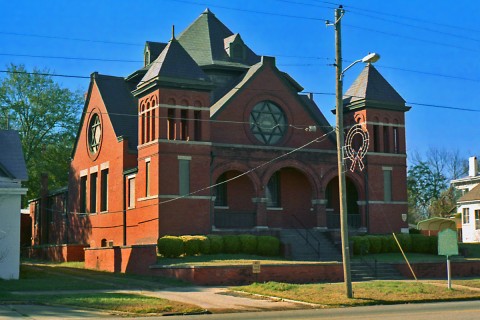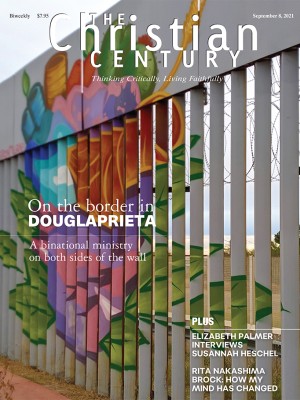I walked across Selma’s Edmund Pettus Bridge and saw a synagogue
Visiting Temple Mishkan Israel

The Edmund Pettus Bridge in Selma, Alabama, is known around the world for one thing in particular. It’s the bridge that hundreds of people walked across as part of the first Selma to Montgomery march, a peaceful protest against the lack of voting rights for African Americans. Forever synonymous with Bloody Sunday, March 7, 1965, the bridge remains a popular pilgrimage site 56 years later.
My wife and I walked across the Edmund Pettus Bridge last month, peering gingerly over the handrail at different points to see the fast-moving Alabama River more than 100 feet below. Cars and trucks whizzed by, mere feet from the pedestrian walkway. I pulled out my phone every so often to Google historic photos that might help my mind locate exactly where the posse of law enforcement officers once stood waiting to crack the skulls of the marchers.
Read our latest issue or browse back issues.
After our bridge walk into history, we climbed back into the car and drove through the business district. Selma is not an affluent community. With a median household income of $27,030, a poverty rate approaching 40 percent, and most of the downtown storefronts vacant, its economic future is uncertain.
Just five blocks from the bridge and across the street from a rundown Trailways bus station, we were stunned when we came upon a synagogue. Not that there shouldn’t be one in this predominantly Black community. But that this massive Romanesque Revival structure, with its beautiful brick towers and large Star of David stained glass, would be situated in rural Alabama is something our civil rights–focused eyes hadn’t anticipated.
I spoke with Ronnie Leet to learn more. He’s a thoughtful soul, one of four remaining members of Temple Mishkan Israel and, at 70, the youngest. The congregation hasn’t had a full-time rabbi to lead services there for almost half a century. Leet told me that Sephardic Jews first came up the Alabama River in the 1830s to settle in Selma. Ashkenazi Jews from Western Europe followed a decade later. By the 1880s, Eastern European Jews began arriving in a third wave of immigration.
For more than a century, Jewish merchants thrived in downtown Selma. Clothing, jewelry, tobacco, hardware, automobile, and banking enterprises were mostly Jewish owned. As Jewish children went off to college, however, few returned to continue family businesses, thus dooming much of the commercial district.
Something else contributed to the decline. When I asked Leet about the synagogue’s relationship to the civil rights movement, he said, “It’s complicated. We had a few ardent segregationists in the congregation and of course integrationists. There was a White Citizen’s Council in town, and there were Jewish businessmen who were part of that council. Blacks boycotted White businesses during the ’60s, as you know, and many of those shopkeepers were Jewish.”
He did note that it was easier being Jewish than Black during the strife. Amy Milligan, assistant professor of Jewish studies at Old Dominion University, told me later that many southern Jews at the time “existed on the edge of Whiteness . . . as the accepted ‘other’ within their communities, a position they understood could be taken away.”
The Jewish presence in Selma may have a future. If Leet and a board he’s helped assemble prove successful in raising millions of dollars to restore the 121-year-old Temple Mishkan Israel, tourists to Selma may look for more than a bridge named after a onetime leader of Alabama’s Ku Klux Klan. They’ll also be able to step into a learning center with vibrant programs and a deep history.
A version of this article appears in the print edition under the title “Jewish in Selma.”






